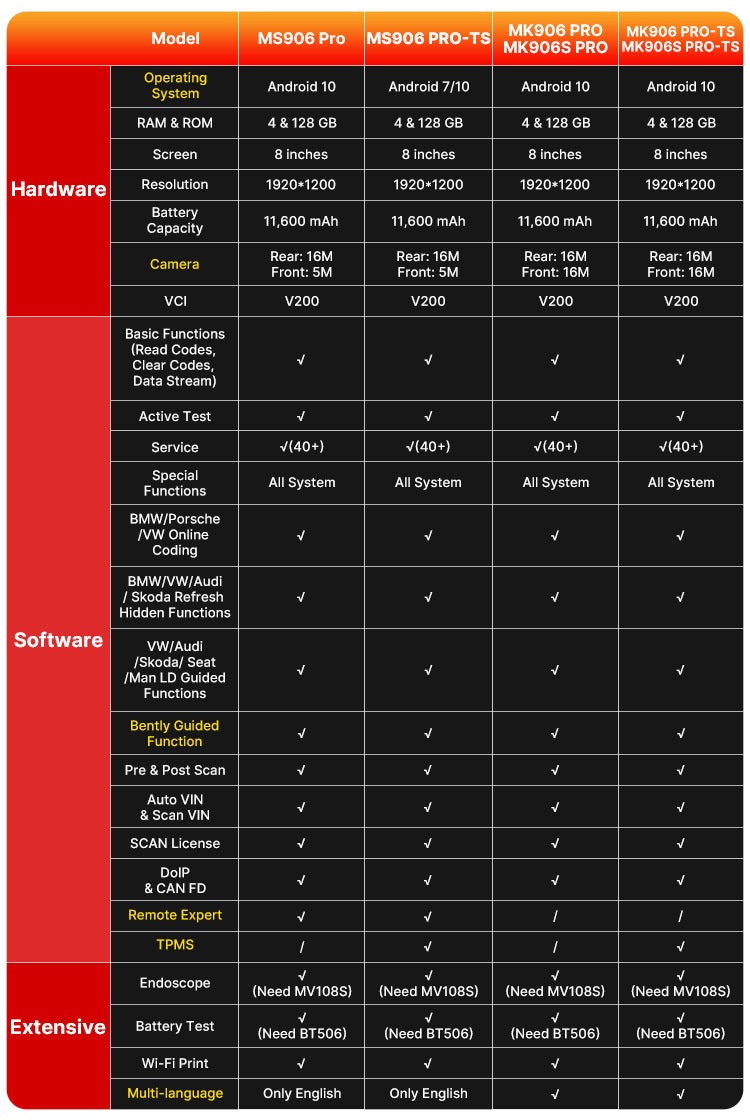The Autel MS906 and MS908 are powerful diagnostic scan tools designed for professional automotive technicians. This article delves into a comprehensive comparison of these two popular Autel devices, outlining their key features, capabilities, and differences to help you determine which scanner best suits your needs. We’ll also touch upon other models in the Autel MaxiSys line, like the MS909 and MS919, for a broader perspective.
Autel MS906 vs. MS908: Feature Breakdown
Both the MS906 and MS908 offer extensive diagnostic functionalities, including reading and clearing codes, performing active tests, and accessing live data streams. However, key distinctions set them apart:
Autel MS906:
- Comprehensive Diagnostics: Covers a wide range of vehicle makes and models, providing access to various systems for comprehensive diagnostics.
- Advanced Functions: Offers capabilities like coding, adaptations, and bi-directional controls for more in-depth troubleshooting.
- User-Friendly Interface: Features an intuitive touchscreen interface and a robust operating system for seamless navigation and efficient operation.
- Wireless Connectivity: Enables convenient communication with vehicles through Bluetooth VCI.
- Affordable Option: Generally priced lower than the MS908, making it a cost-effective solution for many technicians. The MS906 also comes in variants like the PRO, PRO-TS, and the MK906S series.
Autel MS908:
- Enhanced Coverage & Capabilities: Often includes broader vehicle coverage and more advanced features compared to the MS906. This can encompass more specialized functions like J2534 pass-thru programming.
- Higher Processing Power: Typically equipped with a faster processor and larger memory, enabling quicker diagnostics and smoother multitasking.
- Wider Screen & Resolution: May offer a larger, higher-resolution display for enhanced visibility and clearer data presentation.
- Comprehensive Software Suite: Can come bundled with a more extensive software package, potentially including access to more technical information and repair guides. Consider the MS908S PRO II, MK908 II, and Elite II Pro for higher-end options.
Choosing the Right Scanner: MS906 or MS908?
The best choice between the MS906 and MS908 depends on your specific needs and budget:
- MS906: Suitable for technicians who require a reliable, all-around diagnostic tool with advanced functionalities at a competitive price point.
- MS908: Ideal for professionals who demand the most comprehensive coverage, advanced capabilities, and faster performance, often for more demanding diagnostic tasks and complex repairs. The higher-end models like the MS909, MS919, and Ultra offer even more advanced features for specialized use cases.
Expanding the Autel Ecosystem
Autel offers a diverse range of diagnostic solutions, extending beyond the MS906 and MS908. Models like the MS909 and MS919 cater to even more specialized needs with features like oscilloscope integration and advanced driver-assistance system (ADAS) calibration capabilities. The Autel Ultra series represents the pinnacle of their diagnostic technology, offering unparalleled performance and functionalities for the most demanding professionals.
Conclusion
Choosing the right diagnostic scanner is crucial for efficient and accurate vehicle repairs. Understanding the nuances between the Autel MS906 and MS908, as well as other models within the Autel ecosystem, empowers you to select the tool that best aligns with your diagnostic requirements and budget constraints. Careful consideration of factors like vehicle coverage, feature set, processing power, and price will guide you toward the optimal Autel scanner for your professional needs.

